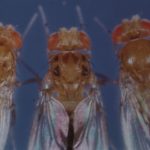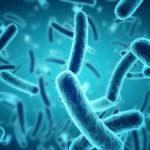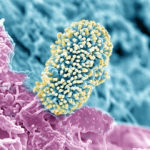Area researchers led a team that examined the microbial, chemical, and geological features of 11 wetland zones in the Bay Area. Their findings indicate that the factors governing how much greenhouse gas is stored or emitted in natural landscapes are more complex and difficult to predict than previously thought.
Microbes to the Rescue
A team of researchers from the Biosciences Area at Berkeley Lab and the University of Birmingham in the United Kingdom found one particular organism in the fly’s microbiome that helps protect it from atrazine, an herbicide toxic to flies that is commonly used in agriculture. This method of rescuing fruit flies from atrazine poisoning with probiotics may be useful for protecting pollinators in agriculture.
Susannah Tringe Quoted in Discover Magazine
Environmental Genomics and Systems Biology Division Director Susannah Tringe was quoted in a Discover magazine feature on harnessing bacteria’s knack for breaking down material that other organisms can’t to clean up tricky messes—from oil spills to plastic waste to corpse-stained marble.
Microbial Fingerprints for Cities
Vibrant cities around the world are made up of a unique blend of cultures, languages, cuisines, and – as scientists recently revealed – microbes. Nearly 1,000 scientists from around the world, including three from Berkeley Lab, collected and analyzed microbial samples from public transit stations across 60 global cities. They probed ticket kiosks, benches, and rails to see what tiny organisms like bacteria, viruses, and archaea were in residence.
Seven Takeaways from the World Microbe Forum Mini-Conference on Studying Microbial Communities
Trent Northen gathered together seven experts who use synthetic communities to get at the key roles microbes play in complex ecosystems, to share their work in a mini-conference at the 2021 World Microbe Forum.
This session and others will be available to registrants for a discounted rate until July 31, 2021. Registration to access World Microbe Forum content ends June 30, 2021.
Was this page useful?








